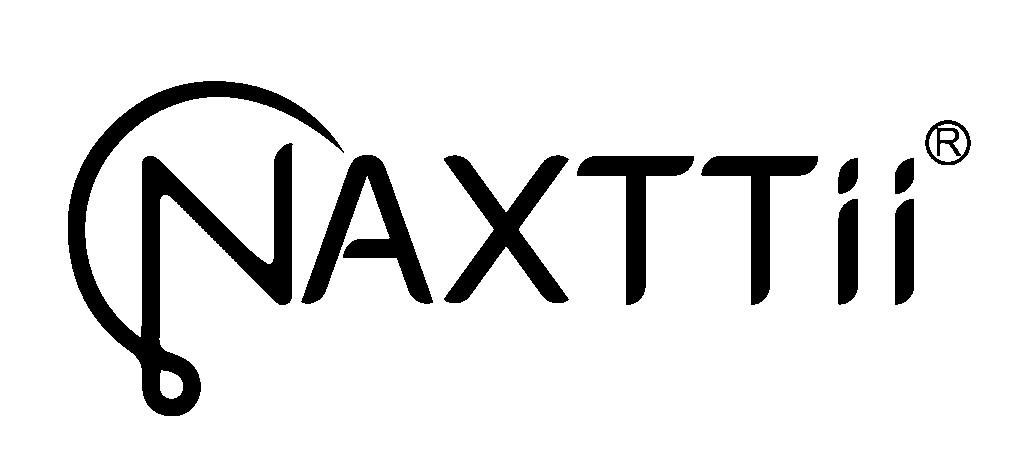A Timeline of Meals Past, Present, and Future
Table of Contents

A classic family dinner feels worlds away from a modern nutrient shake. This contrast highlights a major shift in how society defines a meal. People now often choose efficiency over culinary traditions. In fact, over 40% of U.S. consumers use replacements for a convenient meal. This article charts a timeline of this evolution, exploring the journey from past food customs to a new culinary future. The future of food is rapidly approaching.
Market Snapshot 📈
- The global meal replacement market was valued at USD 21.75 billion in 2023.
- It is projected to reach USD 37.28 billion by 2030.
THE PAST: A TIMELINE OF EARLY MEALS

The history of the meal is a timeline of human innovation. Ancient civilizations established the foundations of our culinary heritage. They developed structured recipes that transformed simple sustenance into a shared heritage. These early cooking traditions show a deep understanding of food.
ANCIENT MEAL CONCEPTS
The earliest known recipes come from ancient civilizations like Mesopotamia. Clay tablets from over 4,000 years ago detail complex culinary instructions. These recipes list specific ingredients and cooking methods, forming a critical part of our food history. The cultural significance of a shared meal has deep roots.
A Glimpse into Mesopotamian Cooking 📜 One ancient recipe for a lamb stew called Tuh’u required many steps.
- Ingredients: The recipe used mutton, onions, arugula, and various spices.
- Method: Cooks would sear the meat, add vegetables, pour in beer and water, and simmer the meal until the sauce thickened.
These detailed recipes show the long history of our culinary traditions.
19TH-CENTURY MEAL PILLS
The idea of a meal-in-a-pill emerged in the late 19th century. Some thinkers imagined a future where a meal pill could free people from the kitchen. This concept of food pills gained popularity. People believed science would soon deliver a meal pill in every pocket. The promise of pills for meals represented ultimate efficiency. This futuristic meal-in-a-pill concept captured the public imagination. The meal pill became a symbol of progress, a sharp turn from the long history of cooking.
THE SPACE AGE PANTRY
The dream of a meal-in-a-pill took a practical step forward during the Space Age. The race to the moon fueled new food technology. NASA needed lightweight, long-lasting food for astronauts. This led to the development of freeze-drying, a process that removes water from food to create powders and solids. This technology was essential for creating the first real meal replacements. Companies saw an opportunity in this vision of the future. General Foods marketed its powdered drink, Tang, as the “drink of the astronauts.” This connected the product to the excitement of space exploration, making a futuristic culinary concept a household reality. The history of the meal pill was entering a new chapter.
THE PRESENT: FUNCTIONAL AND LIQUID NUTRITION
The futuristic culinary dreams of the past have become today’s reality. The modern era of food focuses on function and efficiency. Liquid nutrition has moved from a niche concept to a mainstream choice. This shift reflects a society that values optimized health and productivity. The traditional culinary experience now competes with engineered nutrition designed for specific goals.
MEDICAL MEAL REPLACEMENTS
The journey of modern meal replacements began in hospitals. Medical professionals needed solutions for patients unable to consume solid food. This led to the development of products like Ensure. These drinks provided balanced nutrition in an easily digestible format. They were carefully formulated recipes for recovery and sustenance.
These medical-grade products soon found a new market outside of clinical settings. They transitioned into homes as a convenient source of nutrition for a wider audience. The geriatric population, in particular, became a primary consumer group. Liquid supplements offer an easy way to manage health, especially for those with conditions like cardiovascular disease. This demographic’s needs have significantly shaped the market.
| Demographic Segment | Revenue Share (2023) | Growth Rate (CAGR 2024-2030) |
|---|---|---|
| Geriatric Population | 32.33% | N/A |
| Children | N/A | 13.2% |
Parents also drive growth in this sector. They seek convenient ways to ensure their children receive proper nutrition for development. The ease of use makes these products an attractive option. Athletic communities and health-conscious adults also use functional beverages. They choose drinks with specific ingredients like omega-3s or electrolytes to meet targeted health and performance goals.
THE EFFICIENCY ERA
The 21st century introduced a new philosophy for the meal. A new wave of products targeted busy professionals and tech enthusiasts. Soylent, a prominent example, emerged from a desire to optimize human performance. Its creator, Rob Rhinehart, saw traditional food preparation as an obstacle to productivity. He famously stated:
This mindset applied a “hacker ethos” to nutrition. The goal was to simplify existence by engineering nutritionally complete meals. This approach aimed to free individuals from the complexities of cooking and shopping. The focus shifted from culinary enjoyment to pure efficiency. These new recipes were designed to boost productivity.
Companies market these products as a “lifehack.” They appeal to consumers who want to optimize their lifestyle. Digital platforms offer personalized guidance and meal plans. They help users track their food intake and build healthier habits. This marketing strategy frames nutrition as an investment. The concept of “ROI Nutrition” encourages people to evaluate food based on its return on performance and well-being. This business strategy moves beyond simple calorie counting. It emphasizes how nutrition “pays back” in how a person feels, thinks, and lives.
However, health experts advise caution regarding the long-term use of an exclusively liquid meal plan. Relying solely on these recipes can lead to health issues.
- Nutrient Gaps: Liquid diets may lack beneficial compounds found in whole foods. Long-term use could increase the risk of nutrient deficiencies.
- Digestive Issues: Low fiber content in some liquid products can cause side effects like constipation.
- Misuse Potential: Experts worry about the misuse of very-low-calorie liquid diets, especially without medical supervision. The zealous marketing of formula products presents a worrisome trend away from balanced culinary habits.
These debates highlight an ongoing tension. Society continues to weigh the convenience of engineered food against the holistic benefits of a traditional culinary diet.
THE FUTURE: CULINARY TIME CAPSULES

The future of food is moving toward ultimate personalization. Imagine meals as culinary time capsules, each one engineered for a specific person at a specific moment. This next chapter in our culinary history is not about a single pill for everyone. Instead, it focuses on creating unique nutritional recipes based on our individual biology. The future of food promises hyper-specific solutions, but it also raises important questions about the role of food in our lives. These culinary time capsules represent the peak of nutritional science.
PERSONALIZED NUTRITION
Personalized nutrition shifts the focus from general dietary guidelines to the individual. This approach uses a person’s unique biological data to create custom nutritional recipes. The goal is a meal perfectly matched to one’s genetic makeup and health needs.
Companies are already exploring this frontier. They use nutrigenomics, the study of how genes and nutrients interact, to design these plans. This science analyzes genetic markers to understand a person’s metabolic tendencies.
| Company | Focus | Analysis Method | Key Feature |
|---|---|---|---|
| GenoPalate | Personalized nutrition | DNA analysis | Provides static nutritional recommendations based on genetic markers. |
| Viome | Gut microbiome health | RNA analysis of microorganisms | Offers dynamic insights into gut health and biological age. |
Other companies like Zoe and DayTwo also operate in this space. They translate genetic data into targeted nutritional recipes. For example, a person’s genetic profile might show how their body processes certain vitamins.
| Gene/Process | Impact of Variants | Personalized Action for Supplements |
|---|---|---|
| VDR (Vitamin D Receptor) | Impaired ability to use vitamin D effectively. | Use fat-soluble, micellized D3. |
| MTHFR | Poor B12 and folate conversion. | Supplement with active methylated forms. |
| GSTT1 / GSTM1 | Reduced capacity to neutralize toxins. | Support with polyphenol-rich foods. |
This future is also interactive. Wearable sensors and continuous glucose monitors (CGMs) provide real-time feedback. This data allows people to adjust their nutrition instantly, optimizing their culinary intake based on activity levels and metabolic responses.
However, this highly personalized approach brings ethical concerns.
The Medicalization of Diet Critics worry that this trend could turn eating into a “lifelong medication.” This focus might cause people to overlook the benefits of natural foods. It also risks diminishing the enjoyment and cultural identity tied to eating. The future of the meal must balance science with human experience.
There is also a risk of creating an unhealthy obsession with health. Public perception is another hurdle. Many people find the use of genetic information for food choices problematic, similar to past controversies over genetically modified food.
ADVANCED NUTRIENT DELIVERY
The future of food also involves how we consume nutrients. Advanced delivery systems are the next evolution of culinary time capsules. These methods aim to get nutrients into the body more efficiently. This technology could be key to improving global food security.
Several emerging technologies are shaping this landscape.
- 3D/4D Printing: This allows for the creation of foods with customized shapes, textures, and nutritional values. It could help create texture-modified diets for people with swallowing difficulties or incorporate novel ingredients to fight food shortages.
- Cellular Foods: Cultured meat and cellular milk offer alternatives to traditional animal products, creating a new category of synthetic food.
- Smart Packaging: Nanotechnology can be used in packaging to detect spoilage, ensuring food safety and quality.
- Modernized Fermentation: This ancient technique is being updated to create functional beverages and other healthy products.
3D printing, in particular, holds great promise for creating culinary time capsules. Researchers are working to print customized vitamin gummies, pasta, and even meat alternatives. These recipes could one day help address a global food crisis by using alternative protein sources. However, the technology is not yet ready for industrial production due to limits on printing speed and texture.
Bringing these advanced systems to market involves major hurdles.
- Technological Challenges: Scientists face difficulty containing certain nutrients, solving ingredient solubility issues, and flavoring the final product.
- Regulatory Oversight: There is no clear global legislation for nanomaterials in synthetic food. AI-driven nutrition programs also raise questions about data privacy and algorithm transparency.
- Public Trust: Gaining consumer confidence is essential. Companies must prove their advanced culinary products are safe and effective.
These culinary time capsules represent a fascinating but complex future. They blend the art of recipes with the precision of science, promising a new era of eating.
This culinary a timeline charts the evolution of food. The journey moves from ancient culinary traditions to a future of engineered food. This a timeline shows how the definition of a meal changes with our values. The future of the culinary world raises a key question about technology and food.
Will technology supplement or ultimately replace the shared culinary meal?
FAQ
What is a meal replacement?
A meal replacement is a pre-packaged food, like a drink or bar. It provides the nutrition of a complete meal. People use these products for convenience, weight control, or medical needs. They offer a quick way to consume balanced calories and nutrients.
Are meal replacements safe for everyone?
Meal replacements are generally safe for short-term use. Long-term reliance may cause health issues from a lack of whole foods.
It is best to consult a doctor before making major dietary changes. A professional can provide guidance based on individual health needs.
How does personalized nutrition work?
Personalized nutrition uses a person’s unique biological data, such as DNA. Scientists analyze this information to create custom meal plans. The goal is to match food intake perfectly to an individual’s body for optimal health and performance.
Will technology replace traditional meals?
Experts believe technology will likely supplement, not replace, traditional meals. Engineered foods offer efficiency and targeted nutrition. However, shared meals remain a vital part of culture and community, providing enjoyment that science alone cannot replicate.

Poseidon
Master of Nutritional Epidemiology, University of Copenhagen, Herbal Functional Nutrition Researcher
Focus: The scientific application of natural active ingredients such as Tongo Ali, Horny Goat Weed, and Maca to sexual health and metabolic regulation.
Core Focus:
Men: Use a combination of Tongo Ali (an energizing factor) + Maca (an energy reserve) to improve low energy and fluctuating libido.
Women: Use a combination of Horny Goat Weed (a gentle regulator) + Maca (a nutritional synergist) to alleviate low libido and hormonal imbalances.
Stressed/Middle-Aged Adults: This triple-ingredient synergy supports metabolism, physical strength, and intimacy.
Product Concept:
Based on traditional applications and modern research (e.g., Tongo Ali promotes testosterone-enhancing enzyme activity, and icariin provides gentle regulation), we preserve core active ingredients and eschew conceptual packaging—using natural ingredients to address specific needs.
Simply put: I'm a nutritionist who understands "herbal actives." I use scientifically proven ingredients like Tongo Ali, Epimedium, and Maca to help you make "sexual health" and "nutritional support" a daily routine.
